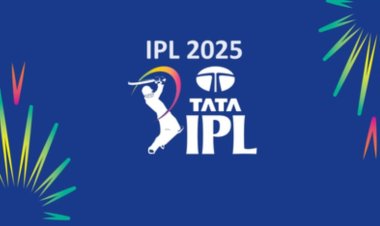Kantar Predicts Future Marketing Trends Shaping India’s Consumer Landscape
Kantar’s latest report reveals the key forces shaping India’s marketing landscape in 2025, focusing on rural growth, Gen Z insights, and the evolving attention economy.

Kantar, a leading marketing data and analytics firm, has released its ‘India at Crossroads’ report, offering a glimpse into the forces set to redefine India's marketing landscape by 2025. Drawing on insights from Kantar experts and extensive data, the report outlines how brands can navigate the evolving terrain of social shifts, consumer behavior, and technology trends to stay competitive.
One of the key takeaways is the profound impact of India's socio-economic shifts post-COVID. The once-dominant urban middle class, which formed the backbone of the consumer goods market, is now shrinking. With real incomes under pressure, urban consumption has slowed significantly. In contrast, rural India is experiencing a surge in consumption, buoyed by favorable monsoons and diverse income streams. According to Kantar's Rural Barometer 2024, digital payments in rural areas have risen from 38% in December 2022 to 43% by July 2024, while e-commerce deliveries have jumped from 14% to 23%, and gaming platform usage has increased from 4% to 12%.
The report also highlights the growing trend of aspiration driving premiumisation. With smaller families, women embracing self-love, and Gen Z carving out their own identities, the aspiration landscape is evolving. For brands, success will hinge on creating a perceived difference that resonates with these shifting aspirations. Differentiation will be critical for brands seeking to climb the aspirational ladder and capture consumer attention.
In the realm of media consumption, Kantar emphasizes the importance of understanding the attention economy. Indian consumers are increasingly splitting their time between traditional and digital media, each with distinct attention characteristics. Effective media planning will require a balanced approach that considers incremental reach, attention levels, and expected brand outcomes. Brands must tailor their media strategies to align with consumer preferences and behaviors, ensuring they remain visible and relevant across channels.
When it comes to Gen Z, Kantar urges brands to move beyond broad generalizations. This diverse demographic cannot be understood through simplistic or algorithm-driven personalization. Instead, successful strategies must delve into the intersectionality of Gen Z's identities and motivations to create experiences that genuinely resonate. Understanding their nuanced preferences will be key to building meaningful connections.
Looking ahead, Kantar envisions three possible scenarios for India's future in 2025, ranging from a continuation of current trends to significant economic disruptions or rapid growth. Regardless of the outcome, brands must focus on exploring consumer identity intersections and crafting narratives that resonate with evolving identities. Storytelling will remain a powerful tool, with emotions serving as the glue that binds consumers to brands.
Deepender Rana, Executive Managing Director, South Asia, Insights Division at Kantar, noted, “India is truly at a crossroads. While some brands are facing challenges with slowing volume growth and price sensitivity, others have thrived by driving meaningful differentiation and forging deep connections with consumers. This report aims to equip brands with the insights needed to navigate these challenges and emerge as winners.”
Soumya Mohanty, Managing Director and Chief Client Officer, South Asia, added, “The future of marketing in India lies in embracing complexity and making strategic trade-offs. Brands that leverage their own data and insights will gain a competitive edge as they move into 2025.”

 Deepanjali
Deepanjali 










